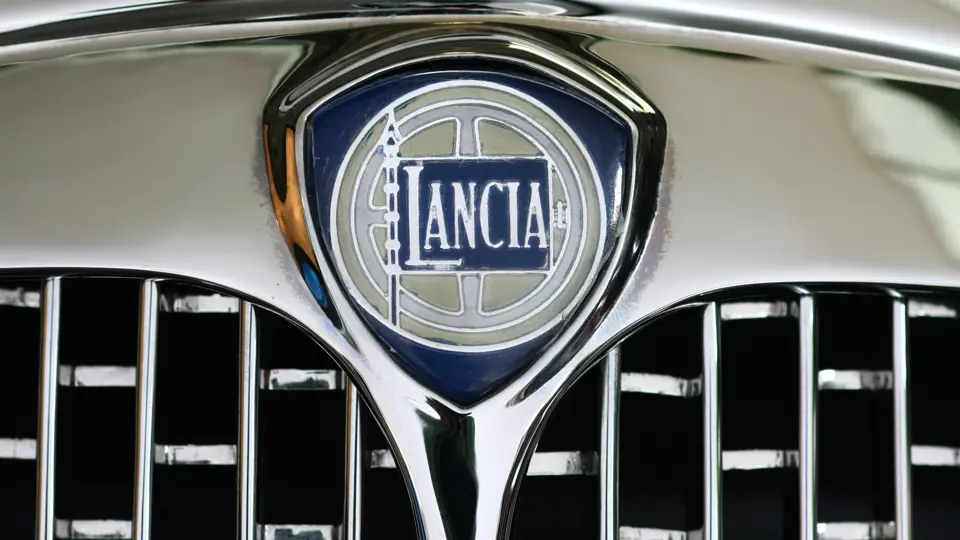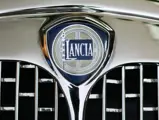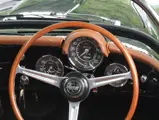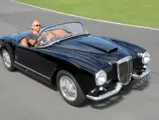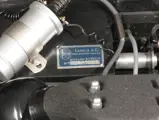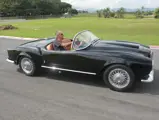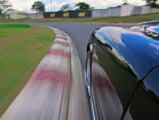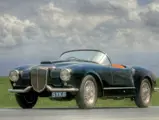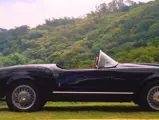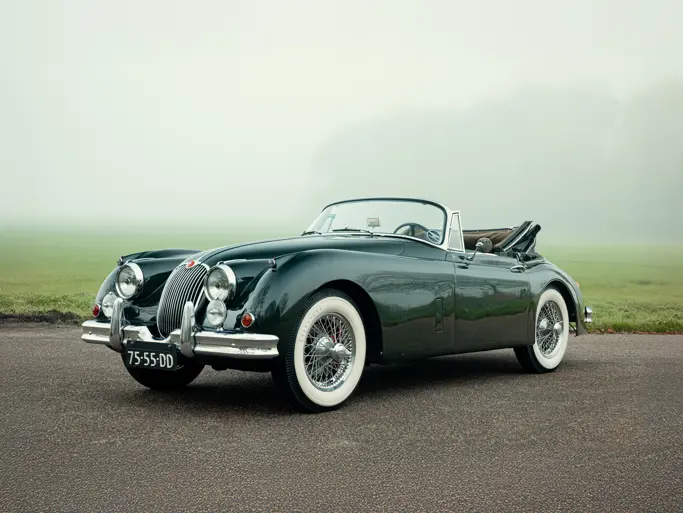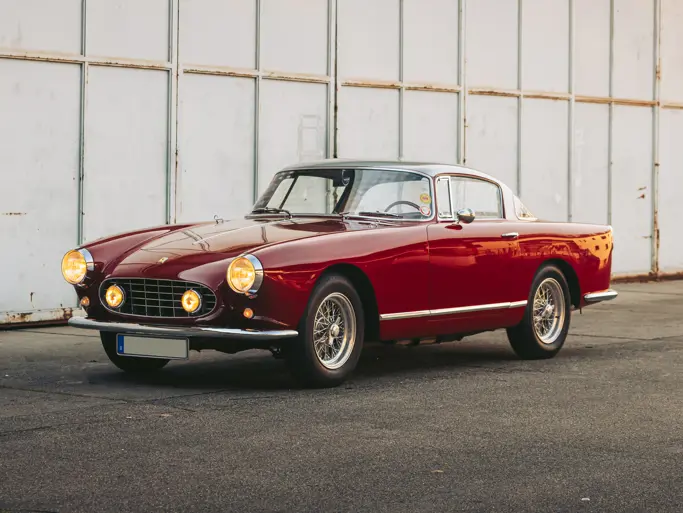118 bhp, 2,451 cc OHV 60-degree V-6 engine, Weber twin-choke carburetor, four-speed manual gearbox, sliding pillar independent front suspension and trailing arm and swing-axle rear suspension with four-wheel hydraulic drum brakes, inboard at rear. Wheelbase: 96.5"
- Timeless Pininfarina design with superb performance and handling
- Fresh 4,000-hour restoration
- RHD, original engine
Guided by engineer Gianni Lancia, the son of company founder Vincenzo, Lancia’s new Aurelia was the company’s first new postwar model. Developed with former Alfa Romeo engineer Vittorio Jano, the Aurelia’s all-new and lightweight all-aluminum engine was the world’s first production 60-degree V-6. A thoroughly modern overhead-valve design, it combined high power output with unprecedented refinement, running quietly and almost vibration-free.
The rest of the Aurelia’s mechanical features were equally impressive. Its new independent rear suspension was a modified DeDion design with trailing arms and rear half-shafts. The four-speed gearbox was mounted within a rear transaxle, the clutch was in unit with the gearbox, a two-piece prop-shaft was utilized, and the rear brakes were mounted inboard. The result was exceptional balance, while concentrating the rear weight in the center of the car kept un-sprung weight to a minimum.
The Aurelia’s radical new drivetrain was mounted to a stiff welded unit-construction body, which provided remarkably light and precise steering and handling. First offered as the B10 and introduced at Turin in 1950, the Aurelia created a sensation – it was an engineering tour de force, packaged in a delightful saloon with engaging Pininfarina coachwork.
Just one year later, the B20GT debuted. A lovely two-passenger coupe designed by Boano and built by Pininfarina, it was mechanically identical to the B10 other than an increase in displacement to two liters. Almost immediately, the B20 GT won the Mille Miglia outright – with a margin of victory that thrust Lancia onto the world stage. Other high-profile Lancia victories included the 1951 Le Mans 24 Hours, the 1952 Targa Florio, the 1953 Liege-Rome-Liege Rally, a 1-2-3 at the 1953 Carrera Panamericana and the 1954 Monte Carlo Rally.
By 1954, the stunning B24 Spider was introduced and primarily aimed at the lucrative American market. With its shorter 96.5-inch wheelbase and flowing Pininfarina design, it remains one of the era’s most beautiful and highly coveted cars. While its bold grille visibly established its Lancia heritage, nearly everything else was new, including the stylish quarter-bumpers, open bodywork and minimalist soft-top. An aggressive hood scoop heralded the 118 bhp, 2.5-liter version of the now-legendary V-6.
As great as the Aurelia-based B24 Spider was, it had one shortcoming. Their advanced specifications, limited-production coachwork and superb build quality made them expensive to build, and historians agree that Lancia lost money on every one. Financial problems and Italy’s labor issues nearly bankrupted the company. As a result, very few were built – 240 in all, with 181 left-hand drive B24S (sinistra = left) models and 59 right-hand drive B24 examples produced. A number of US-bound Spiders were lost in the sinking of the Andrea Doria. Only about 150 Spiders survive today.
According to an accompanying logbook and correspondence between the prior owner and previous owners, this original right-hand drive example from 1954 was raced and rallied quite extensively through the 1950s and 1960s, yet little mention is made of most of the events entered. The last owner reported that this car was one of only three right-hand drive examples originally imported into England, with only 59 of these RHD cars produced in total by Lancia. Bearing its original UK Registration SYK 6 and accompanied by its original registration plates, the Aurelia is also reported to have its original engine.
John Doyle, resident in Turin, Italy, owned the car as early as the 1950s and through most of the 1960s before it was sold to Mr. John Lee Sage, Esq. of Greenwich, London on October 10, 1969, through whom it later passed to Mr. C.J. Bendall of Hitchin, Herts, England. On February 10, 1973, the car was sold to Mr. J.G. Woodgate of Wokingham, Berkshire, who owned it for 36 years until it was acquired by the current owner approximately two years ago.
Mr. Woodgate, who is known to have also owned a number of other Lancias and a Bugatti Type 40, drove the Aurelia for about five years until 1978, before he disassembled the car prior to its eventual restoration, with the purpose of eventually placing it into a noted museum collection for display and safekeeping. The car remained disassembled in his garage until 1998, when he sent the car to local restorer Bill Roberts of Wokingham, England. There, the Lancia underwent extensive bodywork in aluminum and was painted green with cream-colored Connolly leather upholstery. The current owner acquired the car in England and imported it to Costa Rica, where a complete restoration was undertaken. While the body was found to remain in very good condition, a 4,000-hour, concours-quality restoration was recently completed in preparation for its sale at Monterey, preceded by the car’s display at the nearby Quail Lodge. As restored, the Spyder is now handsomely finished in black with a Burnt Orange/Pumpkin leather interior.
This stunning B24 Spider offers an incredible combination of speed, balance and nimble handling, plus undeniable grace. Without doubt, its competition heritage and sporting driving manners will make it a welcome entry into many of the finest vintage driving events worldwide.




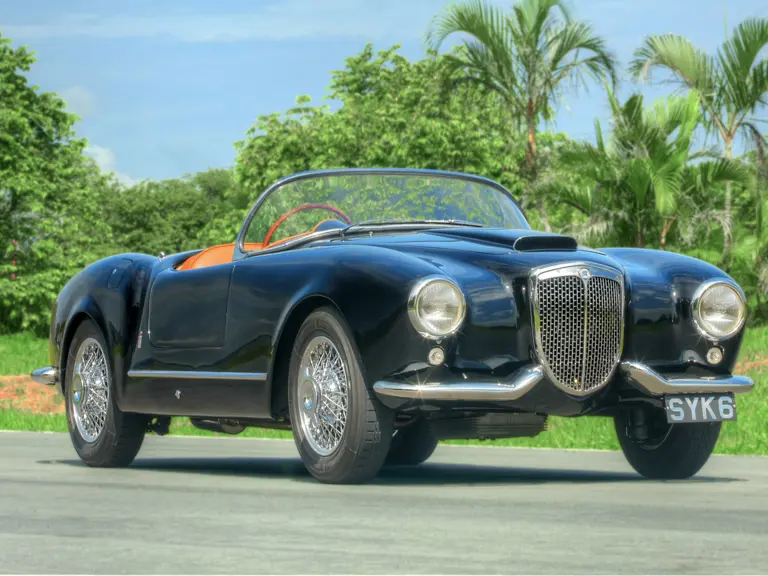
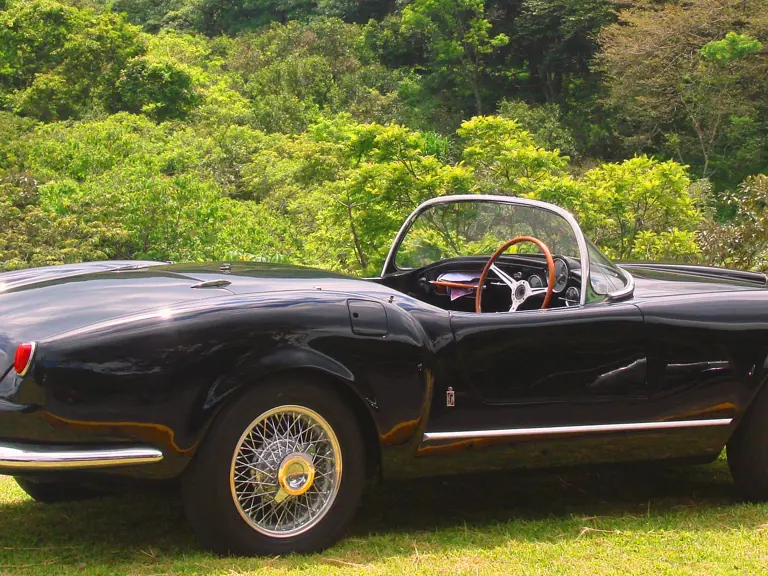
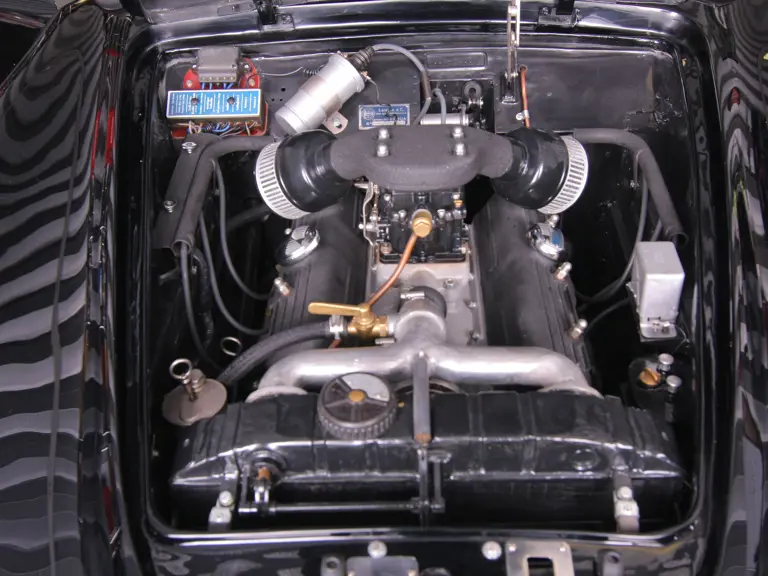
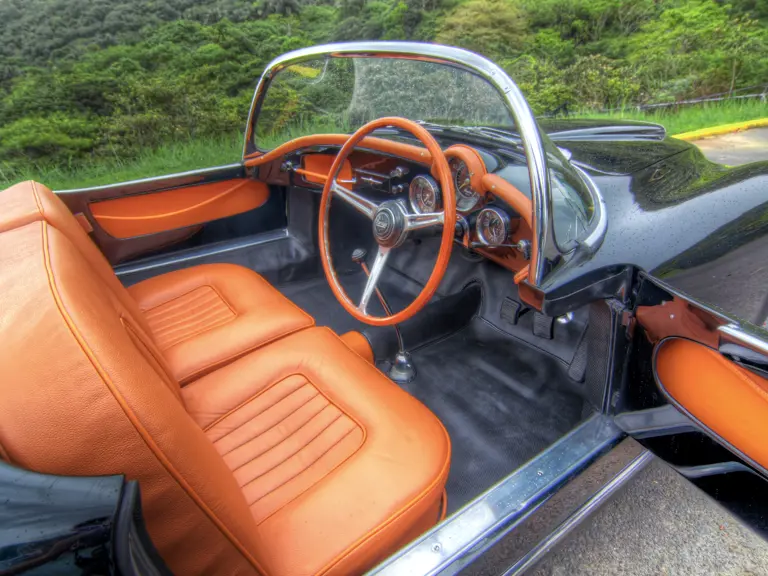

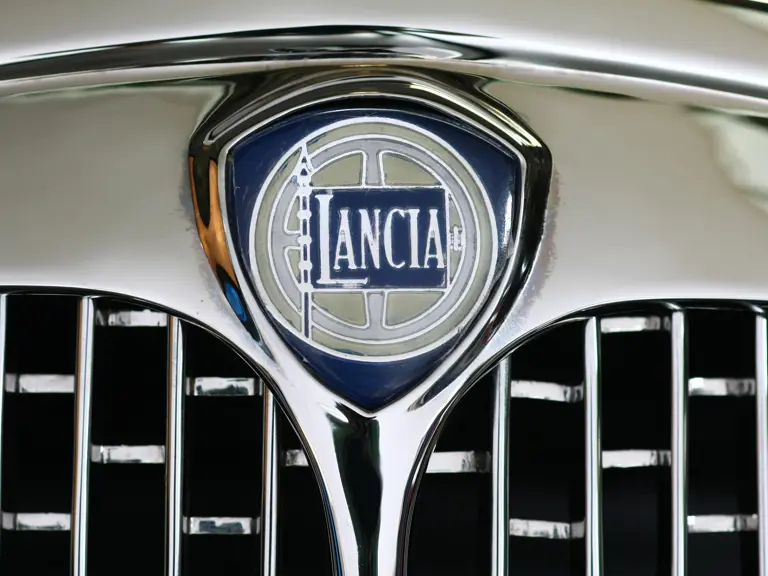
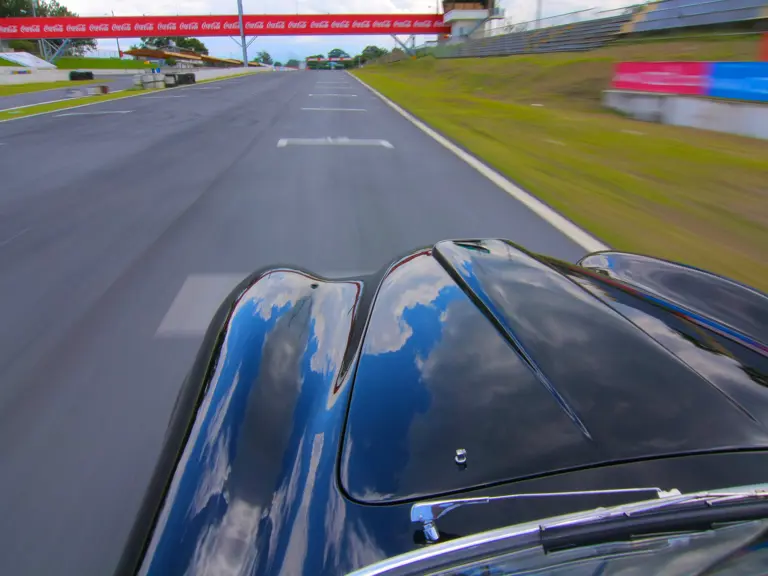
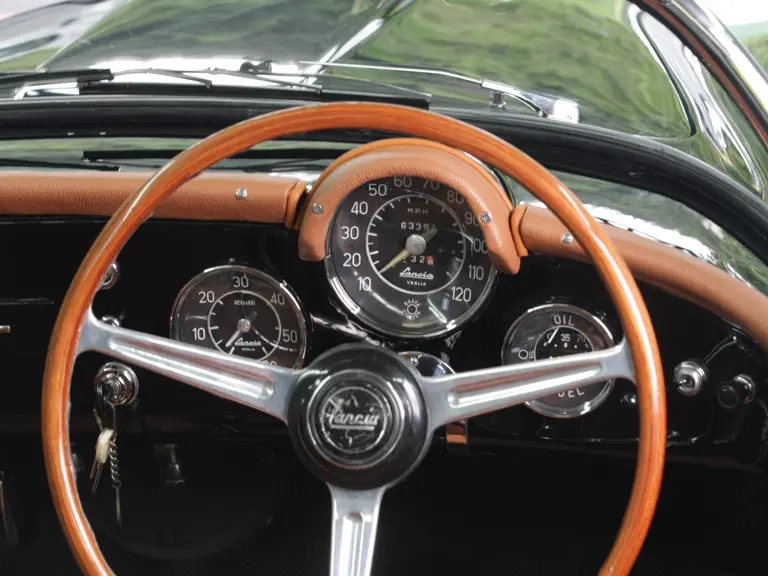
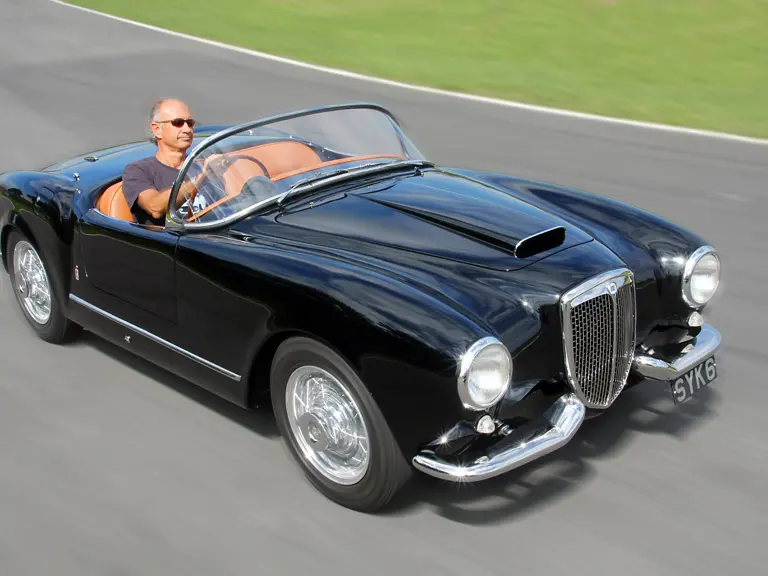
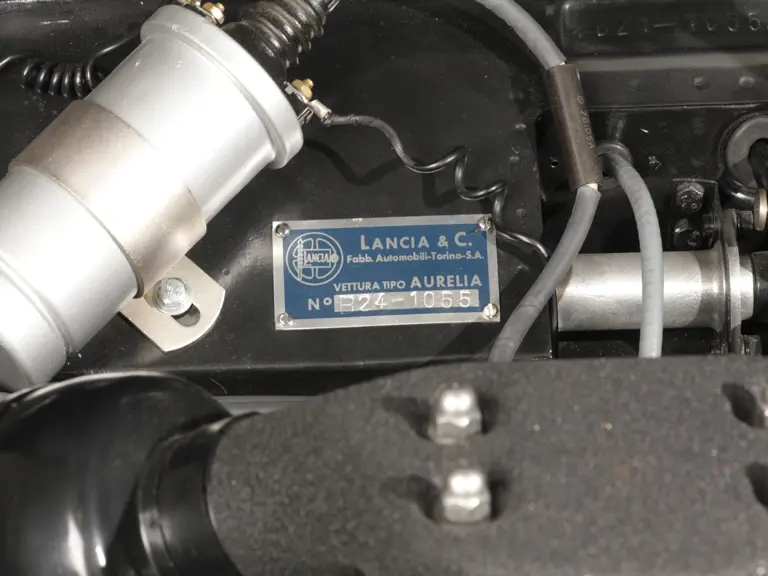
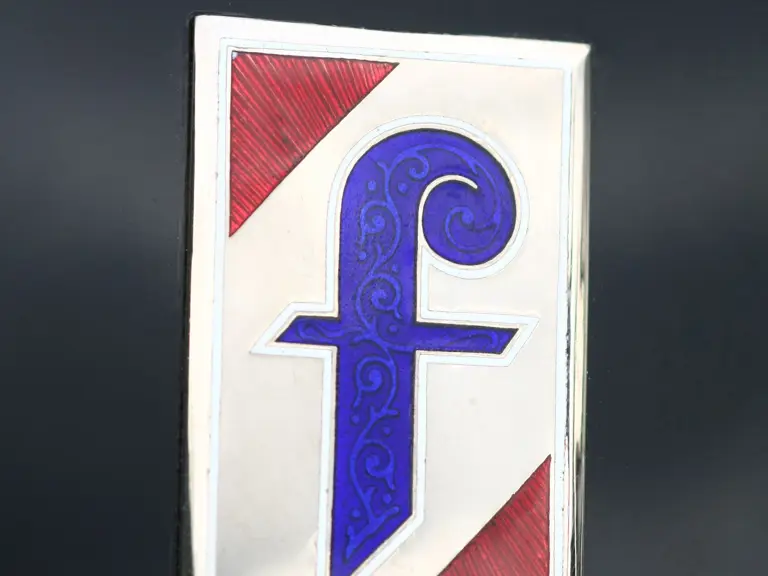
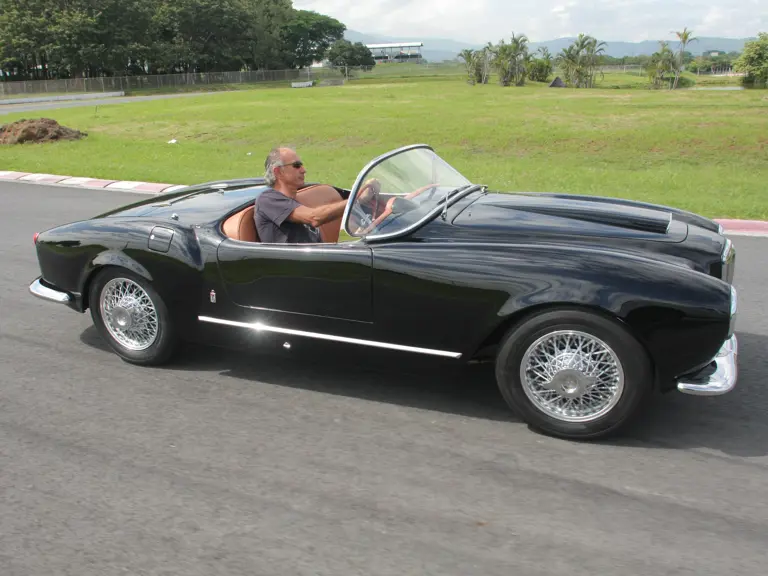

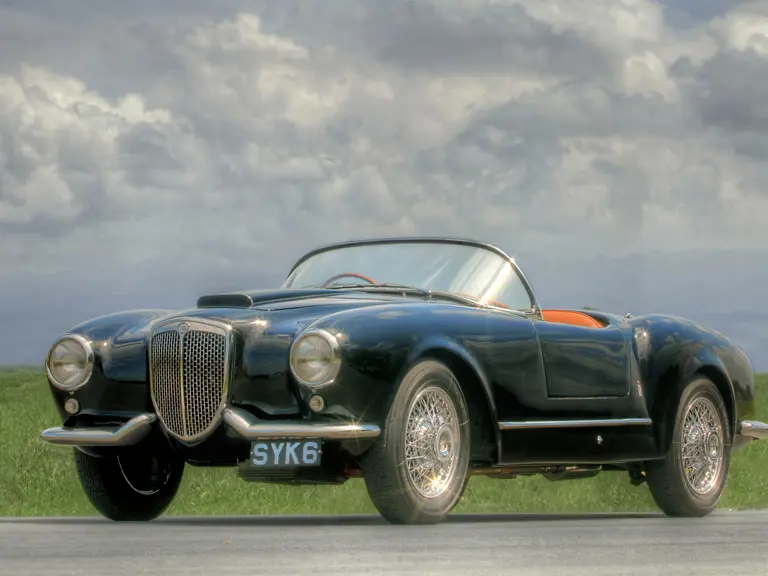
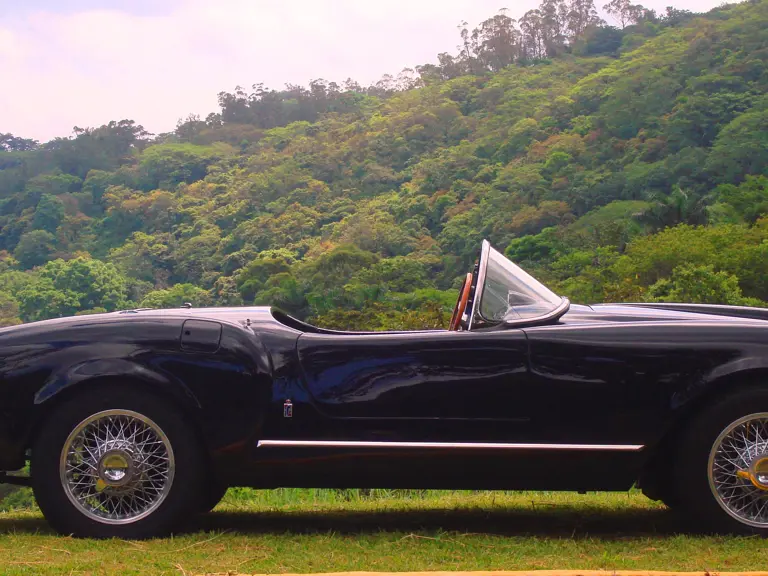
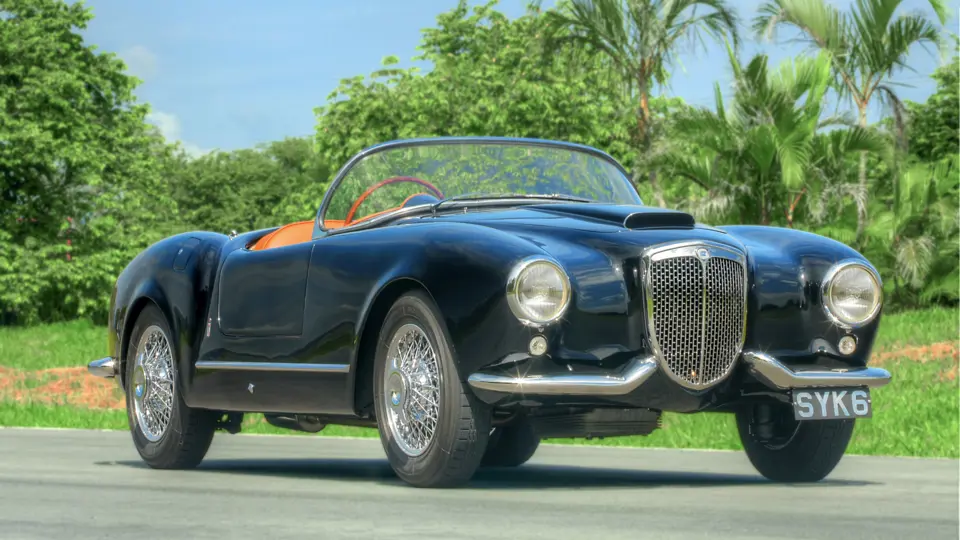
 | Monterey, California
| Monterey, California

